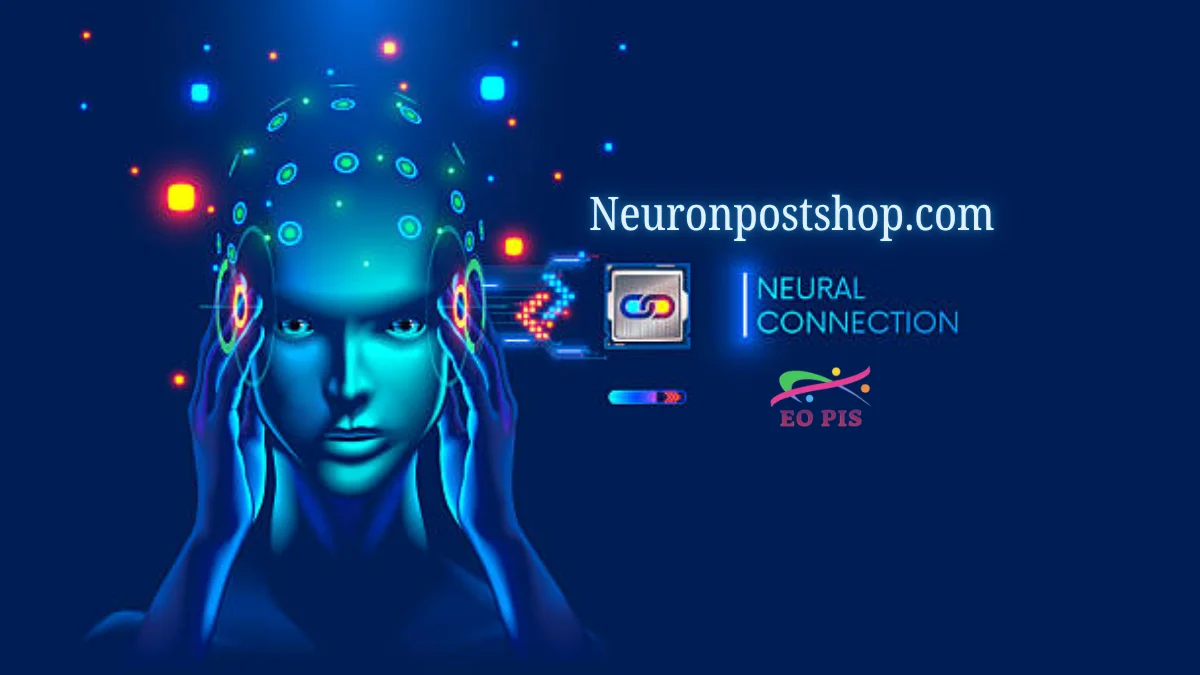Technology
Integrating AI into AR VR Game Development Services for Smarter Gameplay

AI in AR/VR gaming transforms players from participants into collaborators with intelligent worlds.
Gone are the days when virtual reality meant pretty graphics with predictable enemies. Modern AR/VR experiences learn from every gesture, adapt to every play style, and create moments that feel genuinely responsive rather than scripted.
When artificial intelligence meets immersive reality, the line between programmed behavior and genuine intelligence blurs until players forget they’re interacting with algorithms. AR/VR game development agencies or AR VR Game Development Services combining AI aren’t just improving games; they’re creating new forms of entertainment where virtual worlds think, learn, and surprise in ways that static programming never could.
The AI-Enhanced Immersive Gaming Landscape
Market evolution and player expectations for intelligent AR/VR experiences
The AR/VR gaming market rockets toward $53 billion by 2028, with AI integration driving most growth. Players exposed to AI assistants in daily life expect similar intelligence in virtual worlds. They want NPCs that remember previous encounters, difficulty that adapts to their skill progression, and worlds that evolve based on collective player actions.
Investment flows heavily toward studios combining these technologies. Meta pours billions into AI-driven metaverse experiences. Apple’s Vision Pro emphasizes spatial computing with intelligent interactions. Every major player recognizes that static VR experiences can’t compete with AI-enhanced alternatives.
Competitive advantages through AI-driven immersive gameplay mechanics
AI creates competitive moats that graphics alone never could. While competitors can match visual fidelity within months, replicating sophisticated AI behaviors requires years of development and training data. First movers accumulate player data that improves their AI, creating widening gaps between leaders and followers.
Studios using AI report 40% higher retention rates than those without. Personalized difficulty keeps players in flow states longer. Intelligent NPCs create memorable encounters that drive word-of-mouth marketing. These advantages compound as AI systems learn and improve from player interactions.
Technology convergence opportunities and innovation potential
AR/VR or AR VR Game Development Services provides perfect training grounds for AI advancement. Virtual worlds offer controlled environments for teaching complex behaviors. Immersive interfaces enable natural interaction with AI systems. The combination creates possibilities neither technology achieves independently.
Edge computing brings AI processing closer to headsets. 5G networks enable cloud AI with minimal latency. Dedicated AI chips in next-generation headsets handle complex calculations locally. These advances remove technical barriers that previously limited AI in immersive gaming.
Industry adoption trends and successful implementation case studies
Half-Life: Alyx demonstrated how AI enhances VR through intelligent enemy behaviors that use three-dimensional space strategically. Beat Saber’s AI analyzes player movements to generate custom difficulty curves. Pokémon GO uses AI for real-world object recognition and AR placement. These successes prove AI’s value in immersive gaming.
Smaller studios leverage AI to compete with larger competitors. Procedural content generation enables indie teams to create vast worlds. Machine learning handles complex animations that would require massive motion capture budgets. AI democratizes capabilities once exclusive to AAA studios.
AI-Powered Gameplay Mechanics and Intelligent Systems
Adaptive Difficulty and Dynamic Game Balancing
Real-time skill assessment keeps players engaged without frustration or boredom. AI analyzes accuracy, reaction times, decision patterns, and even physiological responses through VR sensors. Difficulty adjusts subtly, maintaining challenge while ensuring progress. Players stay in flow states longer, increasing satisfaction and playtime.
Personalized learning curves respect individual player differences. Some players improve rapidly and need aggressive scaling. Others prefer gradual progression with more practice time. AI identifies these preferences without explicit settings, creating naturally satisfying experiences.
Biometric monitoring through VR headsets provides unprecedented insight into player states. Heart rate variability indicates stress levels. Eye tracking reveals confusion or confidence. Hand tremor suggests fatigue. These signals enable AI to adjust experiences in real-time for optimal engagement.
Intelligent Non-Player Character (NPC) Behavior
• 3D Navigation: NPCs navigate complex vertical spaces, using cover intelligently and flanking through multiple levels
• Environmental Awareness: Characters interact with objects realistically, using tools as weapons and creating barricades
• Emotional Intelligence: NPCs exhibit fear, anger, curiosity, and other emotions that influence their decisions
• Memory Systems: Characters remember player actions and adjust behavior in future encounters
• Social Dynamics: Group behaviors emerge from individual AI decisions, creating realistic crowd scenes
Computer Vision and Spatial Intelligence Integration
Real-World Object Recognition and Environmental Understanding
SLAM enhancement through AI improves tracking stability in challenging conditions. Machine learning predicts device movement to reduce latency. Neural networks filter sensor noise for smoother experiences. These improvements make AR feel more natural and less prone to breaking immersion.
Semantic segmentation understands not just surfaces but what they represent. AI recognizes tables for placing virtual objects, walls for hanging virtual pictures, and floors for character navigation. This understanding enables more realistic integration of virtual and real elements.
Object permanence tracking maintains virtual object positions even when out of view. Players can place items and find them later exactly where left. This persistence creates stronger connections between virtual and physical spaces, making AR experiences feel more substantial.
Gesture Recognition and Natural Interaction Systems
Hand tracking accuracy reaches sub-millimeter precision through AI optimization. Neural networks predict finger positions even when partially occluded. This precision enables fine motor interactions like picking locks or playing virtual instruments in VR.
Custom gesture training lets players define personal commands. AI learns individual gesture styles, accommodating variations in hand size, movement speed, and cultural differences. This personalization makes controls feel natural rather than forcing standard gestures.
Eye tracking integration enables gaze-based mechanics beyond simple selection. AI analyzes scan patterns to predict intentions. Subtle eye movements trigger contextual actions. NPCs respond to being watched, creating more realistic social interactions.
Procedural Content Generation and Dynamic World Building
AI-Generated Environments and Level Design
Procedural generation creates infinite unique experiences solving VR’s content problem. Neural networks generate terrain that feels designed rather than random. Each playthrough offers new layouts while maintaining quality and playability. This variety keeps games fresh without massive content teams.
Player preference learning shapes generated content over time. AI notices if players prefer combat over puzzles, open spaces over corridors, or exploration over linear progression. Future content generation adapts to these preferences, creating personalized experiences at scale.
Dynamic Narrative and Adaptive Storytelling
Story branches adapt based on accumulated player decisions rather than single choices. AI tracks moral tendencies, relationship patterns, and preferred conflict resolution methods. Narratives evolve to challenge or reinforce these patterns, creating deeply personal story experiences.
Dialogue generation moves beyond pre-written responses to dynamic conversations. NPCs respond contextually to player statements, maintaining conversation flow while staying in character. This creates genuine feeling exchanges rather than obviously scripted interactions.
Key Takeaway: Procedural generation with AI isn’t about replacing human creativity but amplifying it. Designers create rules and constraints while AI generates infinite variations within those boundaries. The result combines human intentionality with algorithmic variety.
Machine Learning Models for Immersive Gaming Applications
Reinforcement Learning for Intelligent Game Agents
Multi-agent training creates complex NPC behaviors through competition and cooperation. Agents learn strategies by playing against each other millions of times. This training produces behaviors that surprise even developers, creating genuinely unpredictable opponents.
Curriculum learning progressively increases task complexity as agents improve. Starting with simple goals like navigation, agents gradually learn combat, teamwork, and strategic planning. This structured approach produces more robust and capable AI than throwing agents into complex scenarios immediately.
Deep Learning Applications in AR/VR Gaming
Convolutional neural networks excel at visual tasks essential for AR/VR. Object recognition, pose estimation, and scene understanding all benefit from CNN processing. These networks run efficiently on mobile GPUs, enabling sophisticated vision AI on standalone headsets.
Transformer models revolutionize natural language processing in games. Players speak naturally rather than choosing from dialogue trees. AI understands context, sarcasm, and implied meanings. This enables genuine conversation rather than keyword matching.
Memory Management and Resource Allocation
• Dynamic Loading: AI models stream based on gameplay needs, freeing memory when not required
• Level-of-Detail AI: Distant NPCs use simpler behaviors while nearby characters employ full AI
• Pooling Systems: Reuse AI components across multiple entities to reduce memory footprint
• Async Processing: Run AI calculations parallel to rendering, preventing frame drops
• Predictive Caching: Pre-load likely-needed AI models based on player behavior patterns
Player Behavior Analysis and Adaptive Gaming Systems
Real-time monitoring reveals how players interact with AI systems. Heat maps show navigation patterns. Interaction logs identify confusion points. Attention tracking through eye monitoring shows what captures interest. This data drives continuous AI improvement.
Predictive analytics anticipate player needs before they’re expressed. AI identifies when players might quit and intervenes with assistance or rewards. It recognizes purchase patterns and times offers appropriately. These predictions feel like thoughtful game design rather than manipulation.
Natural Language Processing in Immersive Gaming
Voice commands feel natural in VR where hands are occupied with controllers. AI processes complex commands like “Tell my teammate to cover the left entrance while I flank right.” Natural language understanding interprets intent rather than requiring specific phrases.
Conversational AI companions provide more than combat support. They offer hints when players struggle, celebrate victories, and provide emotional connection to game worlds. These relationships deepen through accumulated interactions, creating bonds that enhance immersion.
Key Takeaway: Natural language processing in VR/AR isn’t just about convenience; it’s about maintaining immersion. Breaking presence to navigate menus destroys the magic. Voice interaction keeps players engaged in virtual worlds without jarring transitions to interfaces.
Multiplayer AI and Social Dynamics
Intelligent matchmaking considers more than skill ratings. AI analyzes play styles, communication patterns, and team preferences to create compatible groups. This reduces toxicity while increasing match satisfaction. Players find teammates who complement their approach rather than just matching their rank.
Community moderation through AI identifies problematic behavior before it escalates. Harassment detection triggers immediate interventions. Positive behavior recognition rewards good community members. These systems create healthier multiplayer environments that retain players longer.
Ethical AI and Responsible Gaming Implementation
Privacy protection becomes paramount when AI analyzes player behavior so deeply. Federated learning trains models without centralizing sensitive data. Differential privacy adds noise while preserving insights. Players control what data gets collected and how it’s used.
Algorithmic transparency builds trust with players. Games explain how AI makes decisions affecting gameplay. Difficulty adjustments show reasoning rather than changing mysteriously. This openness prevents feelings of manipulation while maintaining engagement.
Conclusion
Integrating AI into AR/VR game development services or AR VR Game Development Services creates experiences that transcend traditional gaming. Virtual worlds become living entities that learn, adapt, and surprise. NPCs become characters with memory and personality. Difficulty becomes a personal trainer rather than a fixed setting.
Success requires more than technical implementation. It demands understanding how AI enhances rather than replaces human creativity. It needs a balance between automation and player agency. It requires ethical considerations alongside innovation. These human factors matter as much as algorithms.
The future of immersive gaming lies in the convergence of AI and AR/VR technologies. Games that think, learn, and respond create connections impossible with static programming. Development services by Devsinc master this convergence and are defining gaming’s next generation. The question isn’t whether to integrate AI into AR/VR games, but how to do it in ways that enhance rather than exploit, that surprise rather than manipulate, and that create joy rather than addiction.
Ignite your curiosity with content designed to amaze you daily on EO PIS.
Technology
How Next-Generation Payroll Technology Is Redefining the Workplace

Key Takeaways
- Artificial Intelligence (AI) and machine learning are revolutionizing payroll processes, enhancing efficiency and accuracy.
- Cloud-based payroll systems provide scalability and real-time data access, enabling seamless support for remote work environments.
- On-demand pay options are gaining popularity, offering employees immediate access to their earned wages.
- Global payroll solutions are essential for businesses with international workforces, ensuring compliance across multiple jurisdictions.
The Rise of AI in Payroll Processing
Modern businesses are witnessing a fundamental shift in payroll management as artificial intelligence (AI) emerges as a key player. No longer just a back-office function, payroll is increasingly strategic, offering opportunities to streamline complex tasks and minimize manual errors. For organizations seeking an edge, turning to a trusted payroll services provider now means leveraging advanced tools driven by AI and machine learning. AI-driven payroll systems are capable of automating routine and repetitive activities, such as data validation, payroll calculations, and compliance checks. These systems not only decrease the likelihood of human error but also provide predictive analytics that help organizations forecast costs and manage headcount more effectively. Payroll technology offers transparent, auditable records, allowing finance executives to analyze patterns and trends in workforce compensation with minimal effort. Companies that utilize automated payroll processes report a significant reduction in workload, enabling payroll specialists to focus on value-added, strategic initiatives. According to their research, top payroll solution providers automate nearly 70% of payroll processes and reduce costs by up to 71% through the use of AI and emerging technologies.
Embracing Cloud-Based Payroll Solutions
One of the most significant innovations transforming the payroll landscape is cloud-based technology. Unlike traditional on-premise systems, cloud payroll offers accessibility and scalability essential for supporting today’s distributed and remote workforce. Data is updated in real-time, which minimizes payment delays or errors due to last-minute schedule changes. The flexibility of cloud-based systems enables employers to scale their payroll operations rapidly as their business grows, without incurring significant additional investment in hardware or software. This access is particularly beneficial for HR teams that require seamless integration with other human resources and finance platforms, offering a unified approach to workforce management. Workflow automation features built into cloud systems free up time for payroll specialists, enabling them to focus on people-related strategy, rather than on repetitive administrative tasks. Cloud-based platforms also enhance data security and disaster recovery measures, reducing risk and building organizational resilience.
The migratory trend toward cloud solutions is more than a passing phenomenon. Decision-makers are increasingly recognizing cloud payroll as essential to achieving digital transformation objectives. Adopting cloud HR and payroll systems leads to improved flexibility, lower IT overhead, and a better end-user experience — all critical in the rapidly evolving business landscape. The ability to update systems and deploy security features remotely makes cloud payroll a preferred option for many companies, especially those with global operations.
On-Demand Pay: Meeting Employee Expectations
Gone are the days when employees were content waiting for a bi-weekly paycheck. The concept of on-demand pay is disrupting the traditional pay cycle, enabling employees to access their earned wages instantly. This trend is rapidly gaining traction — a report by ADP illustrates that over three-quarters of employees would value this feature, with executives viewing it as a powerful tool for both attracting and retaining talent. On-demand pay programs provide greater financial flexibility, empowering staff to better manage urgent expenses and unexpected costs without resorting to high-interest loans or credit cards. By giving workers more autonomy over their finances, organizations can enhance overall job satisfaction, reduce financial stress, and improve their reputation as employee-friendly workplaces. On-demand pay also benefits employers by reducing turnover and increasing engagement, as employees are more likely to stay with organizations that prioritize their financial well-being.
Global Payroll Solutions for a Diverse Workforce
As businesses continue to build international teams, the complexity of payroll compliance grows. Each country brings its own legal requirements for taxes, benefits, and reporting procedures. Global payroll solutions are designed to keep pace with this complexity, automatically updating to reflect changes in local laws, allowing HR and payroll departments to focus on their core responsibilities. Modern global payroll platforms offer the structure necessary for seamless, compliant processing, regardless of employees’ locations. Leading providers support multi-country payroll processing, ensuring automatic alignment with diverse regulations and labor laws across multiple countries. With real-time data translation and simplified currency conversion, these systems minimize the risk of costly errors that often occur in cross-border payments. This comprehensive approach enables businesses to confidently tap into global talent pools, knowing that local compliance requirements are consistently met.
Integrating AI for Enhanced Compliance
Compliance remains at the heart of effective payroll management. As regulation changes accelerate, organizations must keep pace or risk costly penalties and reputational harm. Keeping up with evolving regulations, from local labor rules to national tax codes, is a significant challenge—especially for multinational companies. Advanced payroll technology leverages AI to parse labor law updates, interpret regulations, and automatically apply changes to payroll processes. This AI-driven compliance management significantly reduces the administrative burden and improves the precision of payroll runs. With AI, payroll teams can proactively identify anomalies, ensure timely filings, and support audits with accurate, real-time data. This streamlining simplifies what was often a fragmented and manual process, saving businesses considerable time and reducing compliance-related stress. Major publications have highlighted this technology as a game-changer for multinational organizations facing regulatory complexity.
Enhancing Employee Experience with Self-Service Portals
The digital transformation of payroll is not just about operational efficiency; it’s also about elevating the employee experience. Today’s payroll systems empower staff with easy-to-use self-service portals. Employees can securely access their payslips, update personal details, and download essential documents at any time, from anywhere. Changes to direct deposit, tax withholding, or benefits coverage can often be completed in minutes, reducing delays and preventing administrative bottlenecks. These interactive dashboards minimize HR’s administrative workload and foster a culture of transparency. The result is not just a streamlined process, but a more engaged and informed workforce. With instant access to payroll histories, digital communication, and troubleshooting tools, employees become more independent and informed about their compensation and benefits, leading to higher satisfaction and fewer payroll-related inquiries.
Preparing for the Future of Payroll
To maintain a competitive edge in a rapidly changing marketplace, adopting advanced payroll technologies is now a strategic imperative. AI-driven automation, secure cloud platforms, on-demand pay, and global compliance capabilities collectively prepare organizations for the unpredictable future of work. By integrating these tools, payroll teams can significantly reduce processing times, minimize errors, and provide enhanced support to employees at every level of the organization. These investments yield dividends in accuracy, efficiency, and employee satisfaction.
Payroll is no longer just a business necessity — it’s a lever for transformation. By strategically integrating the latest technologies, companies can boost operational performance and cultivate a positive workplace culture. The future of payroll is being shaped by innovation, adaptability, and a relentless focus on the employee experience. Organizations that proactively embrace these changes will be best positioned to attract top talent, protect against regulatory risk, and thrive amid ongoing workforce shifts.
Technology
Music That Travels With You: Why StarStream Radio is Built for Life on the Go

In today’s fast-paced world, music is more than just background noise—it’s a companion, a motivator, and a source of inspiration. Whether you’re commuting, working, exercising, or just relaxing, having the right soundtrack can make all the difference. StarStream Radio – Powered by WLBC Mobile understands this need, which is why it’s built to deliver music wherever life takes you.
Here’s why StarStream Radio is the perfect app for listeners who want their music to go wherever they go.
1. Seamless Mobile Streaming
StarStream Radio is designed for mobile devices, ensuring smooth and reliable streaming no matter where you are. Unlike platforms that require complex setups or suffer from buffering issues, the app keeps your music flowing with minimal interruptions. From the first tap to hours of listening, the experience is simple, fast, and intuitive.
Whether you’re on a bus in London, driving through Toronto, or walking the streets of New York, your favorite stations are just a tap away.
2. A Station for Every Mood and Genre
Life on the go means your musical tastes can change with your mood. StarStream Radio meets this need with a variety of curated stations to match every moment:
- Alternative Rock 2010 to Now for energy and modern edge
- The Classic Rock Rewind for timeless guitar riffs and nostalgic anthems
- Rock 90s and 00s for grunge, alt-rock, and early 2000s hits
- The Vinyl Vibe for a vintage, warm sound
- The Country Crossroads for heartfelt storytelling and soulful melodies
No matter your preference, you can switch between stations seamlessly, creating the perfect soundtrack for any moment.
3. Accessible Across Borders
StarStream Radio isn’t limited by location. Listeners in the United States, United Kingdom, and Canada can all enjoy the same high-quality streaming experience. This global accessibility makes it easy to stay connected to your favorite music no matter where life takes you.
It’s ideal for frequent travelers, remote workers, or anyone who wants uninterrupted access to great music while exploring the world.
4. Quality Audio That Moves With You
The app doesn’t just make music available—it makes it enjoyable. StarStream Radio delivers clear, crisp audio that captures the full depth of every track. Whether you’re listening through headphones, car speakers, or portable devices, the sound quality is consistent and immersive.
It ensures that your music travels with you in a way that feels personal and engaging, turning every commute, workout, or quiet moment into an experience.
5. Easy to Use and Free
With StarStream Radio, there’s no need for complicated setups or premium subscriptions. The app is free to download and easy to navigate, letting you jump straight into the music you love. It’s designed for convenience without compromising on variety, quality, or authenticity.
Explore more posts built to give you fresh perspectives and actionable ideas fast.
Technology
neuronpostshop.com: Your Gateway to Tech and Gaming Innovations

Introduction to neuronpostshop.com
Welcome to the digital frontier where technology and gaming converge! If you’re on the hunt for the latest gadgets, innovative tech solutions, or must-have gaming gear, look no further than neuronpostshop.com. This online marketplace is more than just a shopping site; it’s a vibrant hub that connects enthusiasts and innovators alike. Whether you’re upgrading your setup or searching for cutting-edge accessories, neuronpostshop.com has got you covered. Step into a world filled with exciting possibilities and discover what makes this platform a go-to destination for tech lovers everywhere.
The History and Mission of neuronpostshop.com
Neuronpostshop.com began as a passion project, born from the love of technology and gaming. The founders wanted to create a hub where enthusiasts could find the latest innovations all in one place.
Since its inception, neuronpostshop.com has steadily evolved, adapting to the ever-changing landscape of tech advancements. With a keen eye on emerging trends, it strives to stay ahead of the curve.
The mission is clear: empower customers with top-notch products that enhance their digital experiences. Every item is carefully selected for quality and performance.
This platform aims not just to sell but also to inform and inspire gamers and tech lovers alike. By fostering a community around shared interests, neuronpostshop.com seeks to connect people through their mutual passion for innovation.
Products and Services Offered
Neuronpostshop.com boasts a diverse array of products tailored for tech enthusiasts and gamers alike. From cutting-edge gadgets to the latest gaming consoles, there’s something for everyone.
The website features high-performance laptops designed for intensive gaming and work tasks. These machines deliver speed and graphics that can take your gaming experience to new heights.
You’ll also find a unique selection of accessories like headsets, keyboards, and controllers. Each item is curated with quality in mind, ensuring users get the best performance possible.
Beyond hardware, neuronpostshop.com offers software solutions ranging from game titles to productivity tools. This blend ensures you stay ahead in both leisure and professional pursuits.
With user-friendly navigation on their site, finding what you need becomes an effortless task. The focus is not just on selling; it’s about enhancing your entire tech lifestyle through thoughtful selections.
Tech and Gaming Trends Featured on the Website
Neuronpostshop.com is a treasure trove for tech and gaming enthusiasts. The site showcases the latest innovations that are reshaping our digital experiences. From cutting-edge gaming consoles to high-performance accessories, there’s always something new to discover.
Stay ahead in the world of virtual reality with their curated selections of headsets and immersive games. The trends highlight seamless integration between hardware and software, ensuring an unparalleled experience for gamers.
For tech aficionados, smart home devices take center stage. Neuronpostshop.com features gadgets that enhance everyday living while showcasing efficiency and convenience.
Eco-friendly technology is also on the rise here. Sustainable products make a significant impact without compromising performance or style.
Explore these exciting trends at neuronpostshop.com, where innovation meets your shopping needs in one convenient place.
Benefits of Shopping on neuronpostshop.com
Shopping on neuronpostshop.com comes with a range of benefits that enhance your tech and gaming experience. First, the site offers a curated selection of cutting-edge products. You won’t just find the latest gadgets; you’ll discover hidden gems too.
The user-friendly interface makes navigation effortless. Whether you’re browsing for gaming accessories or looking to upgrade your PC components, everything is just a click away.
Another major advantage is their commitment to customer satisfaction. Fast shipping ensures that you receive your orders without unnecessary delays.
Competitive pricing also sets neuronpostshop.com apart from other retailers in the market. Regular promotions make it even easier to snag great deals on top-tier products.
A robust customer support system stands ready to assist you whenever needed, ensuring peace of mind throughout your shopping journey at neuronpostshop.com.
Customer Reviews and Testimonials
Customer reviews on neuronpostshop.com provide a valuable glimpse into the experiences of shoppers. Users frequently praise the variety and quality of tech gadgets available.
Many testimonials highlight prompt shipping times, ensuring that customers receive their purchases quickly. This focus on efficiency builds trust in the shopping experience.
Shoppers often mention exceptional customer service as a key reason for their loyalty. Friendly representatives are ready to help with any inquiries or issues that arise during the buying process.
Honest feedback about products helps new visitors make informed decisions. Many appreciate how detailed and accurate product descriptions are, enhancing confidence before making a purchase.
Positive ratings reflect not just satisfaction but excitement over discovering innovative items. Customers feel like they’re part of something bigger—a community passionate about technology and gaming advancements.
Upcoming Sales and Promotions
Get ready for some exciting news from neuronpostshop.com. The upcoming sales and promotions are set to take your tech and gaming experience to the next level.
Expect exclusive discounts on popular gadgets and accessories. Whether you’re a gamer or a tech enthusiast, there’s something for everyone.
Look out for flash sales that pop up unexpectedly. These limited-time offers can save you big bucks on cutting-edge products.
Don’t forget about seasonal promotions too! Major holidays will bring special bundles and deals that enhance value while celebrating your favorite tech trends.
Keep informed by signing up for newsletters or connecting via social media. This way, you won’t miss any of the latest announcements regarding these fantastic offers.
Ready yourself for an electrifying shopping journey with neuronpostshop.com as it gears up to deliver unparalleled savings!
Conclusion: Join the tech revolution with neuronpostshop.com?
As technology and gaming continue to evolve at a rapid pace, staying ahead of the curve is essential. neuronpostshop.com serves as your gateway to discover the latest innovations that can elevate your tech experience. With a diverse range of products and services tailored for enthusiasts like you, it’s easy to see why this platform has gained popularity.
Shopping on neuronpostshop.com not only allows access to cutting-edge gadgets but also connects you with valuable insights into emerging trends. The customer reviews further reinforce the quality and satisfaction associated with each purchase, ensuring you make informed decisions.
With frequent sales and exciting promotions, there’s always an opportunity for savings while exploring new technologies or enhancing your gaming setup. Embracing innovation has never been more accessible.
Join the community today. Explore what neuronpostshop.com has to offer and step into a world where technology meets passion. Your next great discovery awaits!
-

 General4 months ago
General4 months agoQuikernews.com: Redefining Real-Time Journalism in the Digital Age
-

 Technology4 months ago
Technology4 months agoPi123: Revolutionizing Data-Driven Decisions with High-Speed, High-Accuracy Math Engines
-

 Eo Pis3 months ago
Eo Pis3 months agoUnlocking the Power of EO PIs: A Personalized Path to Natural Wellness
-

 Entertainment4 months ago
Entertainment4 months agoPremiumIndo69: The Rise of an Exclusive Digital Ecosystem for Next-Gen Entertainment
-

 Eo Pis5 months ago
Eo Pis5 months agoWhat is EO PIs? Unveiling the Healing Power Behind Essential Oils
-

 General4 months ago
General4 months agoAvstarnews Contact Working Hours: Your Complete Guide to Reaching the Right Support at the Right Time
-

 Technology5 months ago
Technology5 months agoNewznav.com 8888996650: Unmasking the Mysterious Digital Duo Reshaping News and Communication in 2025
-

 Eo Pis5 months ago
Eo Pis5 months agoEO PIs: Discover the Secret Ingredients Powering Aromatherapy



